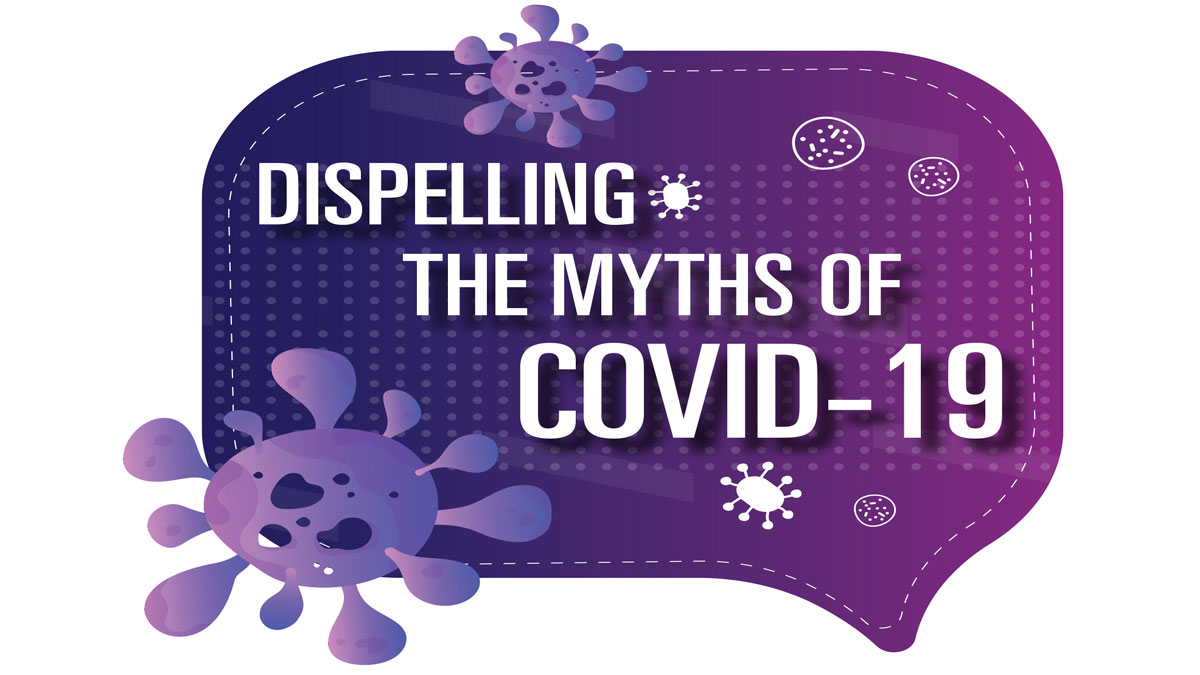The coronavirus is uncharted territory. Many people say that the scariest part is not knowing enough about it. And with that, rumors have developed – hearsay, if you will. So much of the information we read is not based on fact or endorsed by experts, yet the information gets out, causing panic and fear. We decided to speak to a primary care doctor at Palmetto Primary Care Physicians to help clarify some of those myths. Thank you to Dr. Brian Dewhirst for answering these questions.
HealthLinks: What is the truth about the bat that carried the illness in Wuhan? Do bats have COVID-19 normally? What other animals carry it?
Dr. Dewhirst: “It is known that bats in Southern and Southwest China carry coronaviruses, and bats have been identified as the likely source of the SARS outbreak in 2003. Many other animals carry coronaviruses as well, although the novel SARS-CoV-2 virus has only rarely been found in other animals, including some dogs and most notably a tiger at a New York zoo. At this time, there is no evidence that animals play a significant role in the spreading of the virus that causes COVID-19. While it is true that bats in China have been identified as a likely source of the novel SARS-CoV-2 virus, the evidence to date is not conclusive and research is ongoing. The original source of the SARS-CoV-2 virus has yet to be found.”
HealthLinks: Do people need to worry about their pets? Like cats?
Dr. Dewhirst: “There are cases of pets – including cats and dogs – having the SARS-CoV-2 virus, although these have been pets in close contact with humans known to be infected. Pets do not seem to be a major source of transmission or infection. With our current understanding, people probably do not need to worry about catching the virus from their pets. Since pets can get the virus, if someone is known to have COVID-19, they should avoid close contact with animals, as well as people, until they have recovered.”
HealthLinks: What about catching COVID-19 from breathing it in the air outside? Can you get it just by jogging past someone who has it?
Dr. Dewhirst: “The SARS-CoV-2 virus that causes COVID-19 is transmitted the same way as other respiratory viruses – primarily by droplets from the oral, nasal and respiratory tract. You are not likely to become infected by jogging by someone with it. As long as you maintain the usual social distancing precautions, enjoying outdoor activities by yourself or at least 6 feet from others should be fine.”
HealthLinks: Can you give us some insight into the fact that people carry COVID-19 at times but have no symptoms and can pass it to others? Is that true?
Dr. Dewhirst: “Yes, this is absolutely true. You can be contagious and not even know it. We know that many types of viruses often have no symptoms. This is even more of a concern with the SARS-CoV-2 virus since it is known that up to 50% of infected patients may have little to no symptoms. This is one of the reasons it is more infectious and why social distancing and precautions like wearing face masks are so important.”
HealthLinks: Can you dispel the truth about surfaces? How long does it last on a surface like on the mail or a package?
Dr. Dewhirst: “Current evidence suggests that the SARS-CoV-2 virus can remain on copper for up to four hours, cardboard and paper – including mail and packages – for up to one day and stainless steel and plastic for up to three days. It is harder to catch the virus from a soft surface such as fabric than from hard surfaces such as doorknobs or faucets. You should regularly clean and disinfect commonly touched household surfaces. This can be done with soap and water or alcohol-based sanitizers – with at least 70% alcohol. You should wash your hands with soap and water for at least 20 seconds after touching these products or surfaces.”
HealthLinks: Can it be sexually transmitted?
Dr. Dewhirst: “There is currently no evidence that the SARS-CoV-2 virus is transmitted through semen or vaginal fluids. The virus can spread through feces/fecal matter. Of course, the close contact with sexual activity increases the risk of infection through the usual routes – cough, sneeze, nasal drainage, saliva, etc.”
HealthLinks: There is so much controversy over wearing masks. What do you think is the truth about the safety of wearing a mask?
Dr. Dewhirst: “Since the SARS-CoV-2 virus is transmitted primarily through respiratory droplets and people can be contagious and not know it, wearing masks is one of the primary ways you can protect yourself and especially others around you. You should definitely wear a mask when you will be out in public or around other people. While N95 masks are recommended for health care workers or people in close contact with known COVID-19 patients, cloth/cotton masks do seem to provide some protection for the general population. Wearing a mask in public is an important way to prevent virus transmission.”
HealthLinks: Will the rising temperatures and humidity ward off the virus for a while – similar to the lower rates of the flu in the summer months?
Dr. Dewhirst: “Since COVID-19 is a new viral illness, the answer to this question is continuing to evolve. Looking at statistical data and recent research from areas of the world with warmer climates, there does appear to be a significant decrease in the transmission, infection and death rates in these areas. While higher humidity and warmer temperatures do seem to slow the spread of the virus, we are still not sure just how much of an effect this will have in the coming months.”
HealthLinks: What is your opinion about the 5G signals and use of technology lowering the immune system? Should people worry about that?
Dr. Dewhirst: “There is no scientific evidence to support this claim. There is no reason at this time to believe that the 5G network or the use of any available technology affects the immune system function.”
HealthLinks: Are children unaffected by COVID-19? Why aren’t there more cases in children?
Dr. Dewhirst: “Children can definitely get infected and sick with SARS-CoV-2. It’s quite possible that we don’t see as many cases in children simply because their symptoms are often milder and we have not been testing them as frequently. However, there is a myth circulating that children are more immune to the COVID-19 illness because they are younger and healthier. What is clear is that children of all ages can get SARS-CoV-2, their complications are sometimes severe and some have died. Children need to take the same precautions – hand washing, social distancing, wearing masks around others – as adults, not only to protect themselves but others.”







